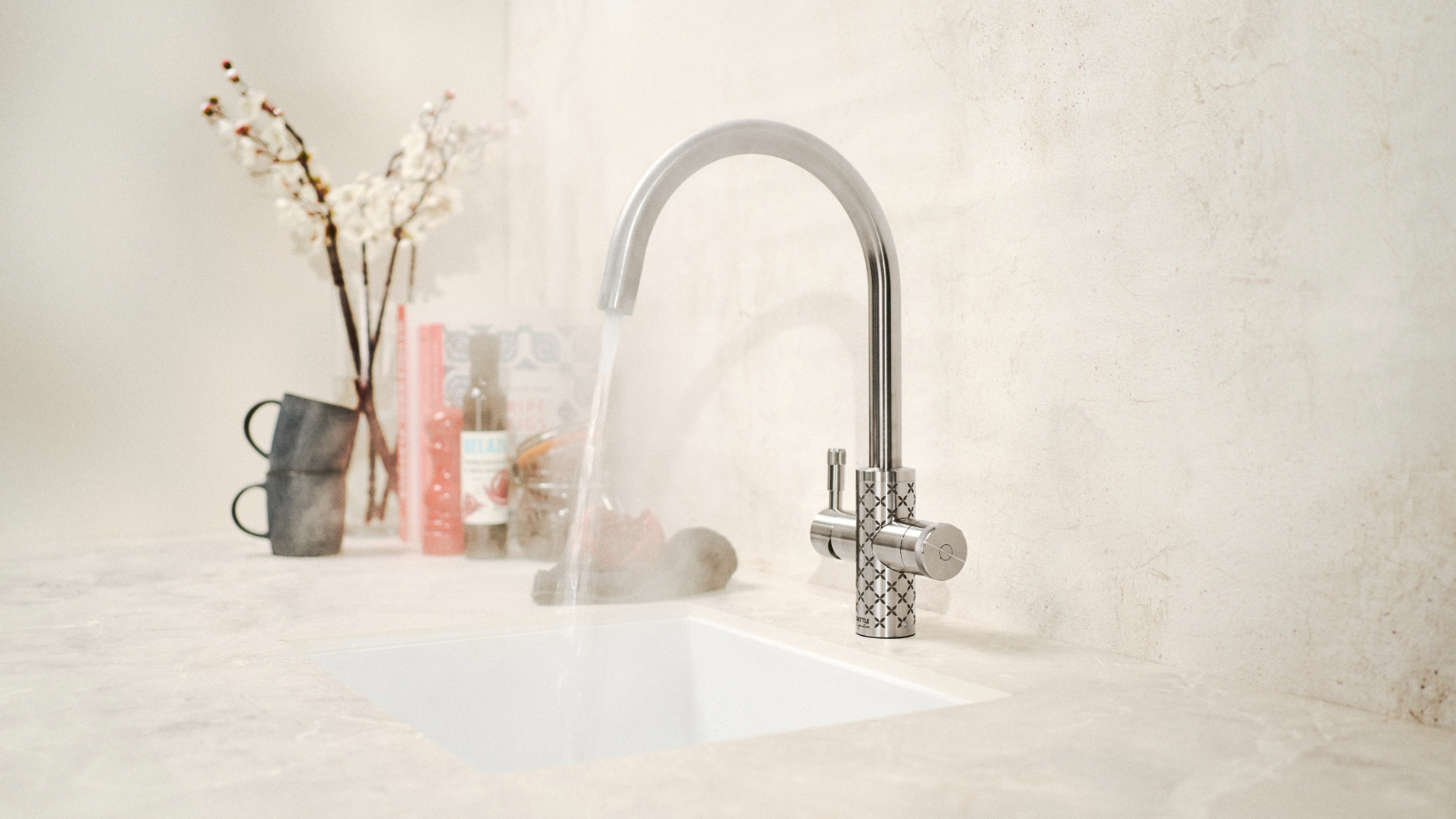Plants for gravel gardens and driveways that will love dry conditions — with options for sun and shade
Create a low-maintenance Mediterranean-style oasis by growing plants out of gravel
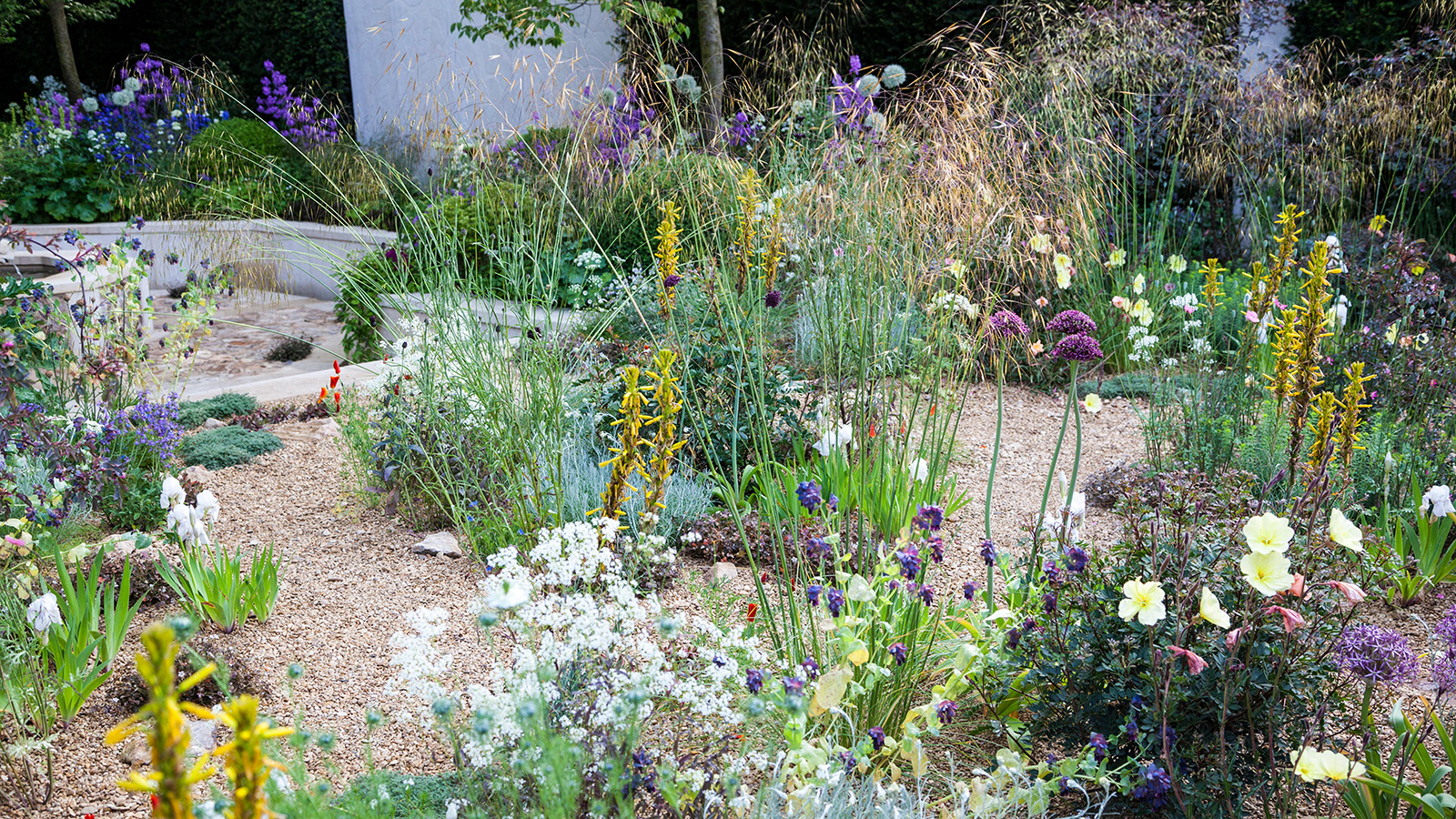
There are an array of plants that will thrive in gravel gardens, due to their love of well-draining soils, and tolerance of dry conditions.
Many people are finding themselves moving away from the more traditional lawned garden in favour of a more low-maintenance and water-friendly landscape. Gravel gardens tick so many boxes both visually and practically.
But the key, to keeping it looking as green and inviting as a lawned garden, is to ensure you pack your space with planting in order that it still has a lush feel.
Unlike with traditional paving slabs, it's straightforward to add pockets of planting within a gravelled landscape garden, providing that plants are given a little support whilst they're establishing, and you've selected varieties which are appropriate for your lighting conditions.
9 plants for gravel gardens to beautify your low-maintenance space
"Consider a gravel garden in the same way as you would any other; look at where there is sun and where there is shade and choose your plants for gravel gardens accordingly," says Carole Crawshaw, associate director at Austin Design Works Ltd.
1. Euphorbias
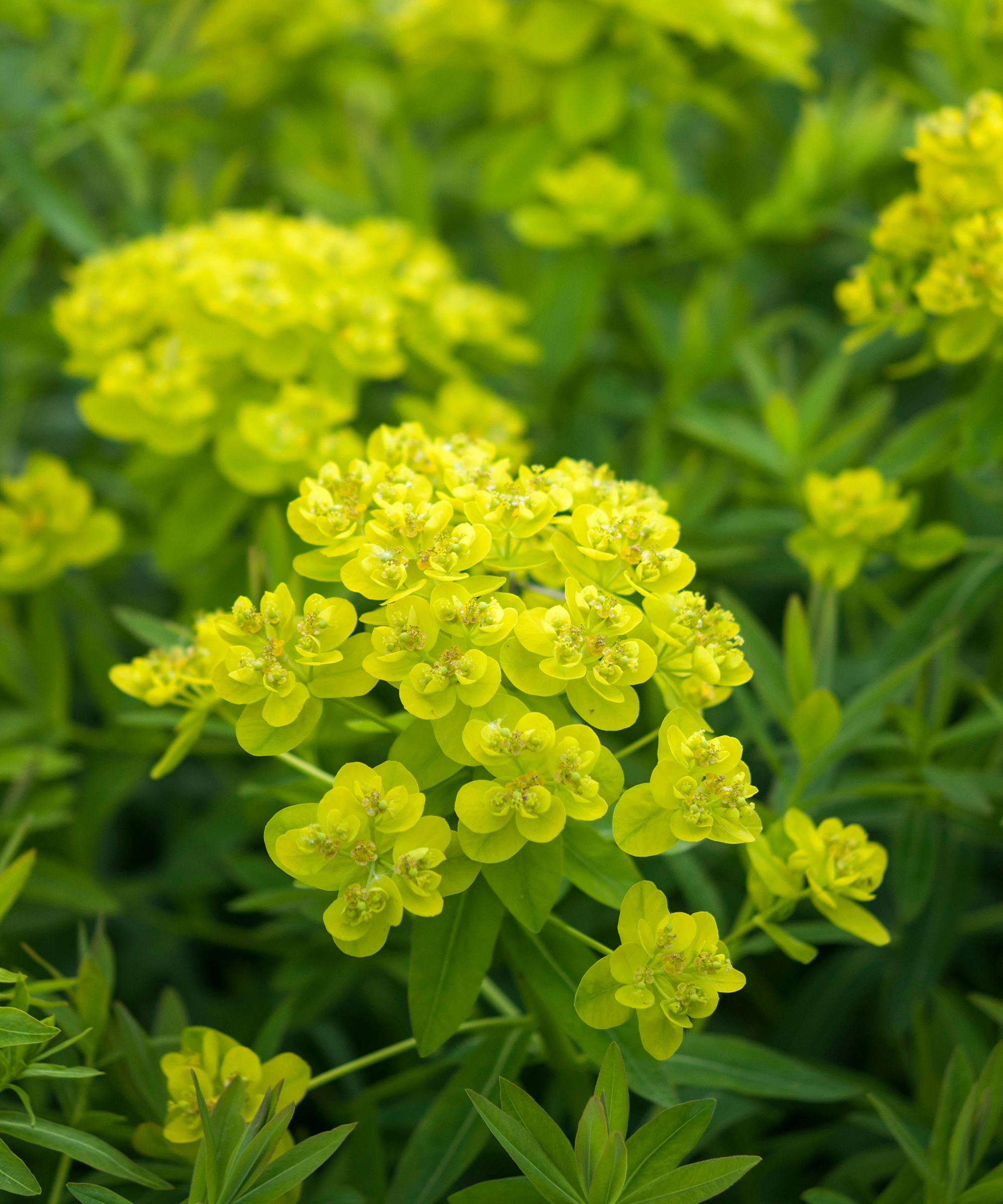
Euphorbias are extremely drought tolerant, and there are many varieties available that all make great choices for a gravel garden design.
"Euphorbia x pasteurii will provide sweet-scented flowers, whereas Euphorbia myrsinites is sprawling and great for planting at the front of a garden," says Graham Smith MClhort, a gardening expert from LBS Horticulture.
Bring your dream home to life with expert advice, how to guides and design inspiration. Sign up for our newsletter and get two free tickets to a Homebuilding & Renovating Show near you.
"Shrubby euphorbias are easy to grow, and they prefer well-draining soil in a sunny or partially shaded area. They will benefit from mulching annually if their soil is prone to weeds or very poor. Water euphorbias well when first planting them, and cover with a layer of mulch to help the plant keep moisture in while it is establishing," says Graham.

Graham has extensive knowledge in the horticultural and gardening industries, and prides himself on using this to help gardeners of all skills create their perfect outdoor space.
2. Lavender
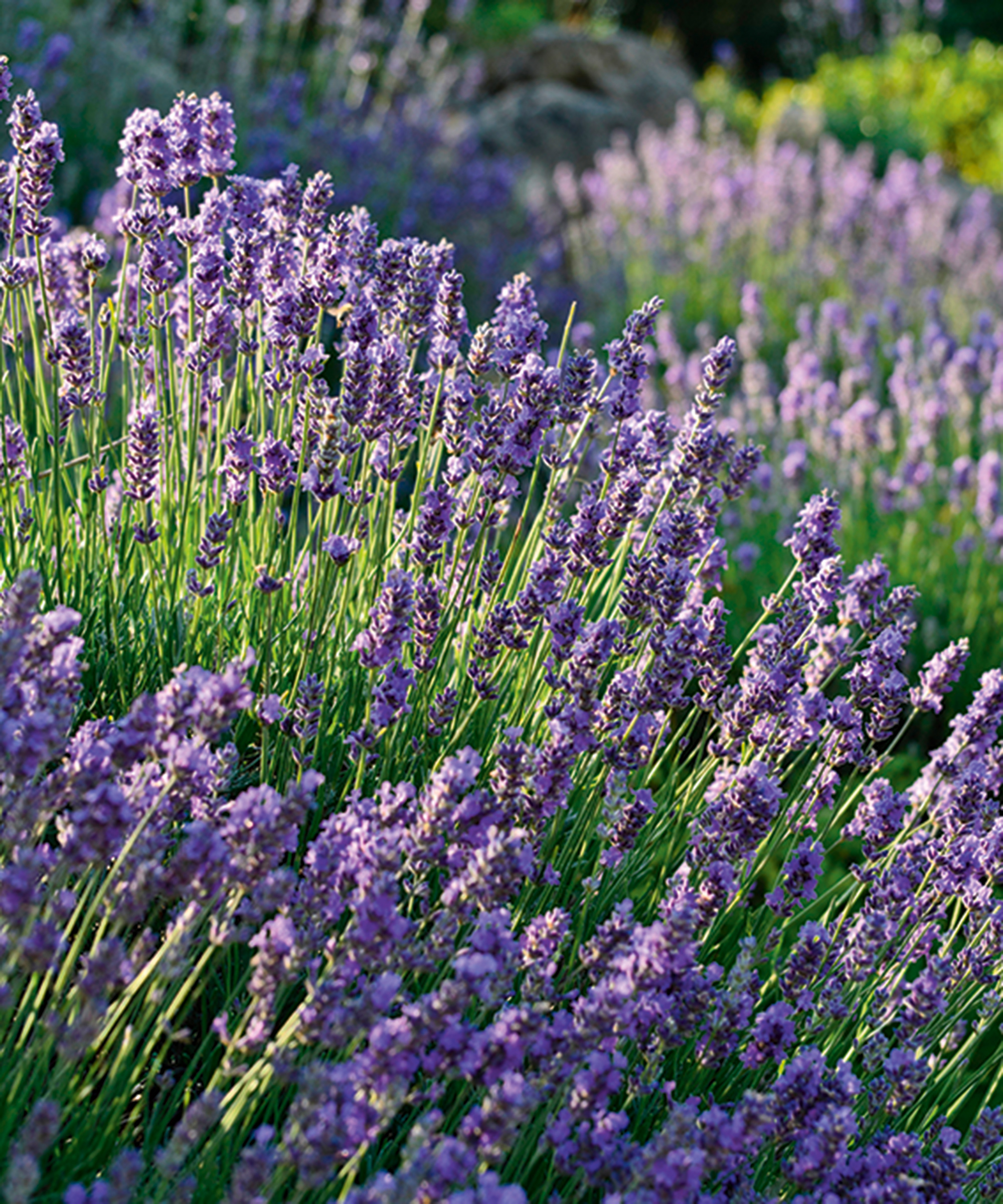
"Lavender can thrive in dry areas, and there are low-growing varieties that are ideal for the front of borders. The majority of varieties are hardy, and they should be grown as plants for full sun with free-draining soil," says Graham.
Expert plantswoman, Sarah Raven recommends Lavandula angustifolia ‘Essence Purple’ at Sarah Raven as the best choice for gravel.
"This is an early flowering and long-blooming gem. They make ideal plants for gravel gardens tolerating drought conditions well, and the aromatic evergreen foliage provides year-round interest. You should cut back flower spikes in autumn but do not cut into the woody stem. Lavender dislikes having soggy roots, so don’t overwater it," says Sarah.

Sarah’s love of gardening extends to all areas, from growing cut flowers and delicious vegetables from seed, to designing stunning gardens packed full of variety, colour and scent. Always with a focus on helping the environment and biodiversity, Sarah’s gardens are havens for birds, bees and other pollinators.
3. Phlomis
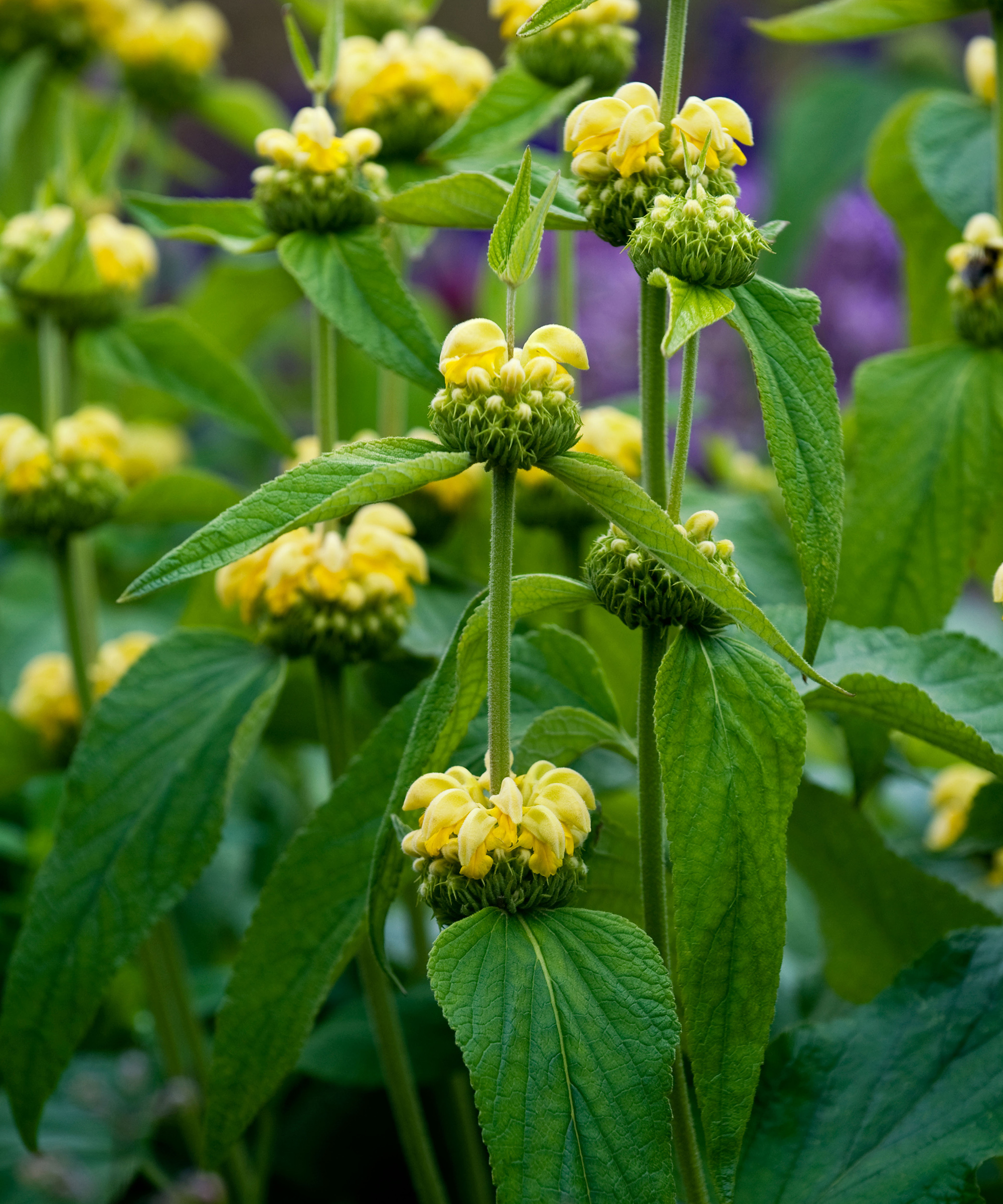
"Phlomis will produce bee-friendly flowers regularly on their stems, and they also provide winter interest in the form of their seedheads, making them a great architectural addition to a garden," says Graham Smith MClhort.
Your gravel garden or driveway should have well-draining soil, and phlomis will do best in an area where they will receive full sun to partial shade.
"Cut back the plant in spring to prevent it from becoming unruly, and feed it every two weeks in summer with a general fertiliser. You do not need to deadhead faded flowers, as the seedheads appear ornamental in winter," adds Graham.
Try Phlomis russeliana at Crocus.
4. Cistus
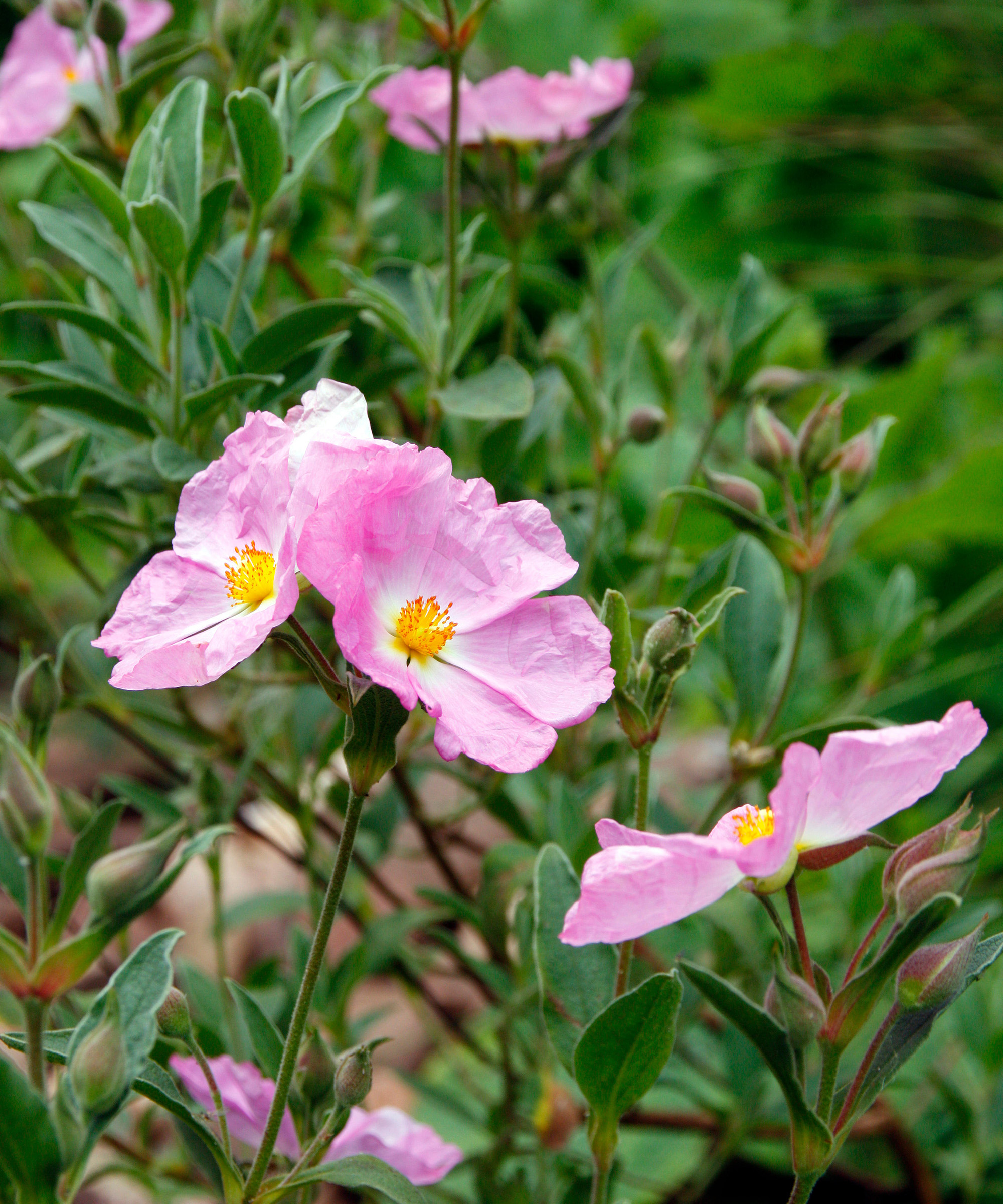
"Cistus usually tend to be small, evergreen shrubs, with white or pink flowers. They should be grown in well-draining soil in full sun, and the nectar-rich flowers will work great for attracting pollinators for an eco-friendly garden," says Graham Smith MClhort.
"It is best to plant cistus in spring, as the warm, moist soil will help them to establish their roots. Newly planted cistus should be watered regularly for the first year or so, and are extremely drought tolerant after this," says Graham.
Try Cistus creticus Silver Pink - Rock Rose at Gardening Express.
5. Gaura
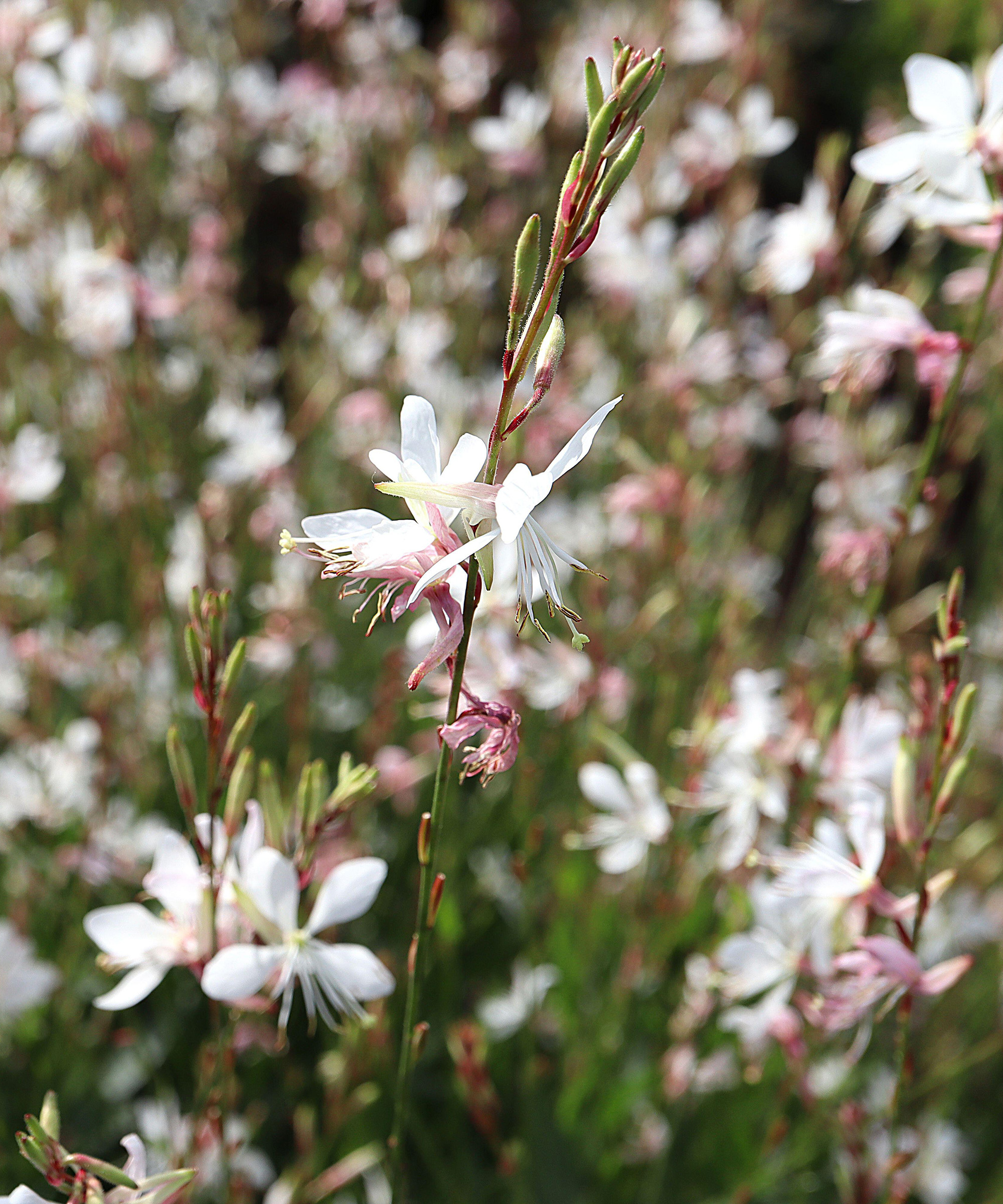
These gravel garden plants are well known for their tolerance to drought and ability to flower for a long period over the summer months if they're planted in free-draining soil and a sunny position.
"Ensure that the plants are not crowded in too much by neighbouring plants. They are fairly low-maintenance garden plants aside from being well watered through summer, but you can cut back and divide congested clumps in spring. However, more mature plants do not respond well to being moved or divided," says Graham.
Try Gaura lindheimeri 'Sparkle White' at Sarah Raven.
6. Stachys byzantina
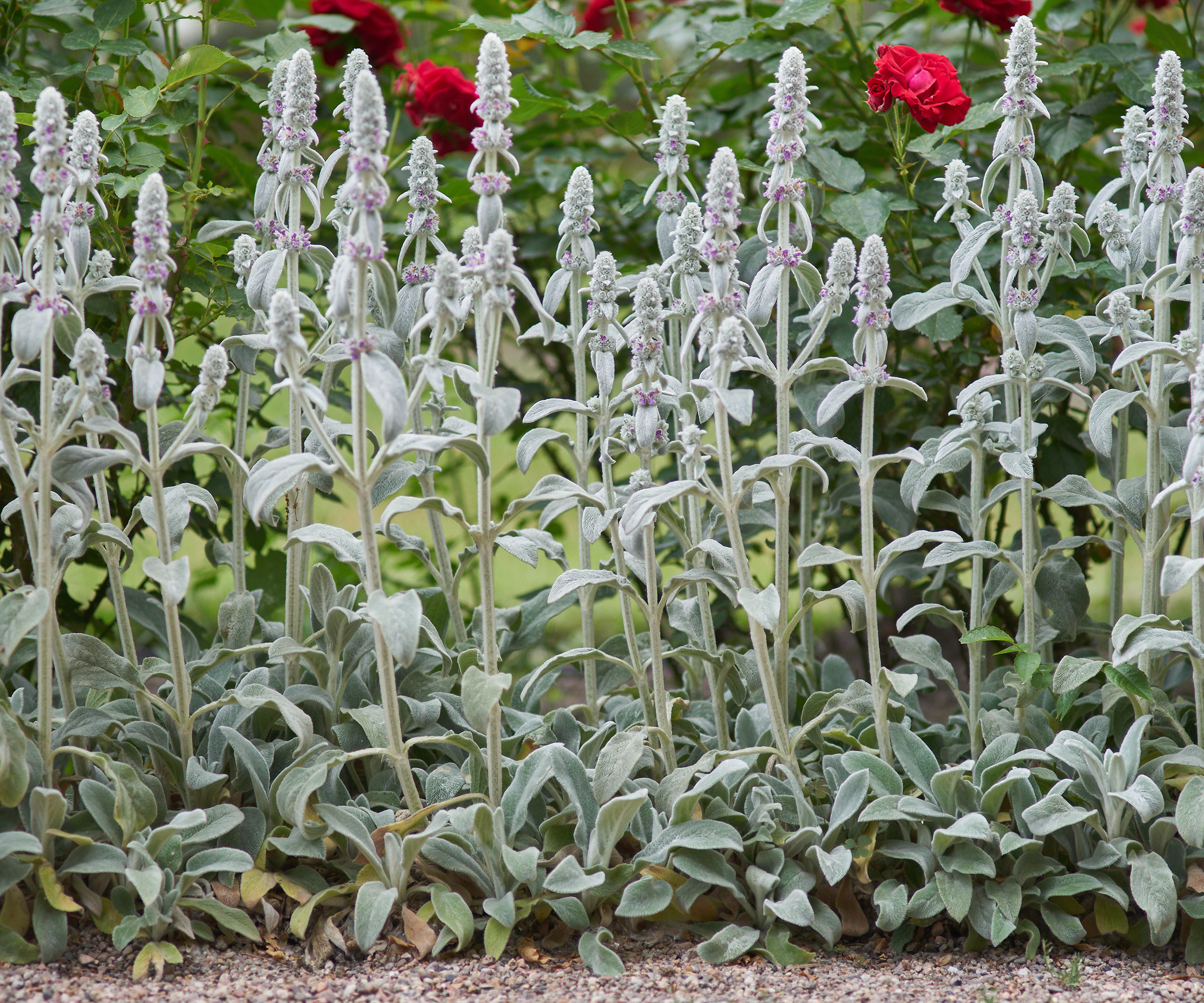
Stachys byzantina, perhaps more commonly known as ‘Lamb's ears’ due to its furry-soft leaves, is an ideal gravel garden plant.
"It is a very tactile plant, so make sure it is planted where it can be touched. These leaves are evergreen, so will give interest all year round and they'll produce a nice, low mat of foliage that will create an excellent spread of 60-90cm (2-3ft), and in June/July this mat is topped by chunky spikes of small purple flowers," says Nick Hamilton, plant expert of Barnsdale Gardens.
A plant that is an excellent nectar source for beneficial insects, with the flower spikes reaching about 45cm (18 ins) in height. Try Stachys byzantina 'Big Ears' at Thompson & Morgan.

Nick's extensive gardening knowledge is the result of years of practical experience, trial and error, but also success with organic and peat-free methods. Most days, Nick can be found working at Barnsdale Gardens in his preferred "hands-on" capacity. He continues to produce exhibits that have won Gold Medals at events like Gardeners' World Live and in the Chelsea Flower Show's Great Pavilion.
7. Thyme

This evergreen herb has many different varieties, all of which can be used in cooking, though Nick Hamilton advises that all the flavours achieved may not be as strong as common thyme (Thymus vulgaris).
"I would go for the prostrate varieties for a gravel front driveway garden because these will also cope with being run over by a car wheel, which will also release a lovely aroma! Therefore a good variety would be Thymus serpyllum ‘Pink Chintz’ which flowers during June and July. Both this and the Stachys need planting in a sunny position," says Nick.
8. Cotoneaster

If your gravel garden or driveway is in the shade then cotoneaster, either the evergreen and deciduous varieties, is a good plant for shade.
"I would go for either Cotoneaster dammeri or Cotoneaster procumbens ‘Queen of Carpets’. Both are evergreen with rounded, glossy green leaves and white flowers in the spring. The masses of flowers are then followed later in the summer by spherical red fruits that will last well into winter and feed the birds too," says Nick Hamilton.
"‘Queen of Carpets will produce a very low-growing shrub that will achieve around 10cm in height, with a spread of 2m but can be clipped back if need be."
9. Salvia
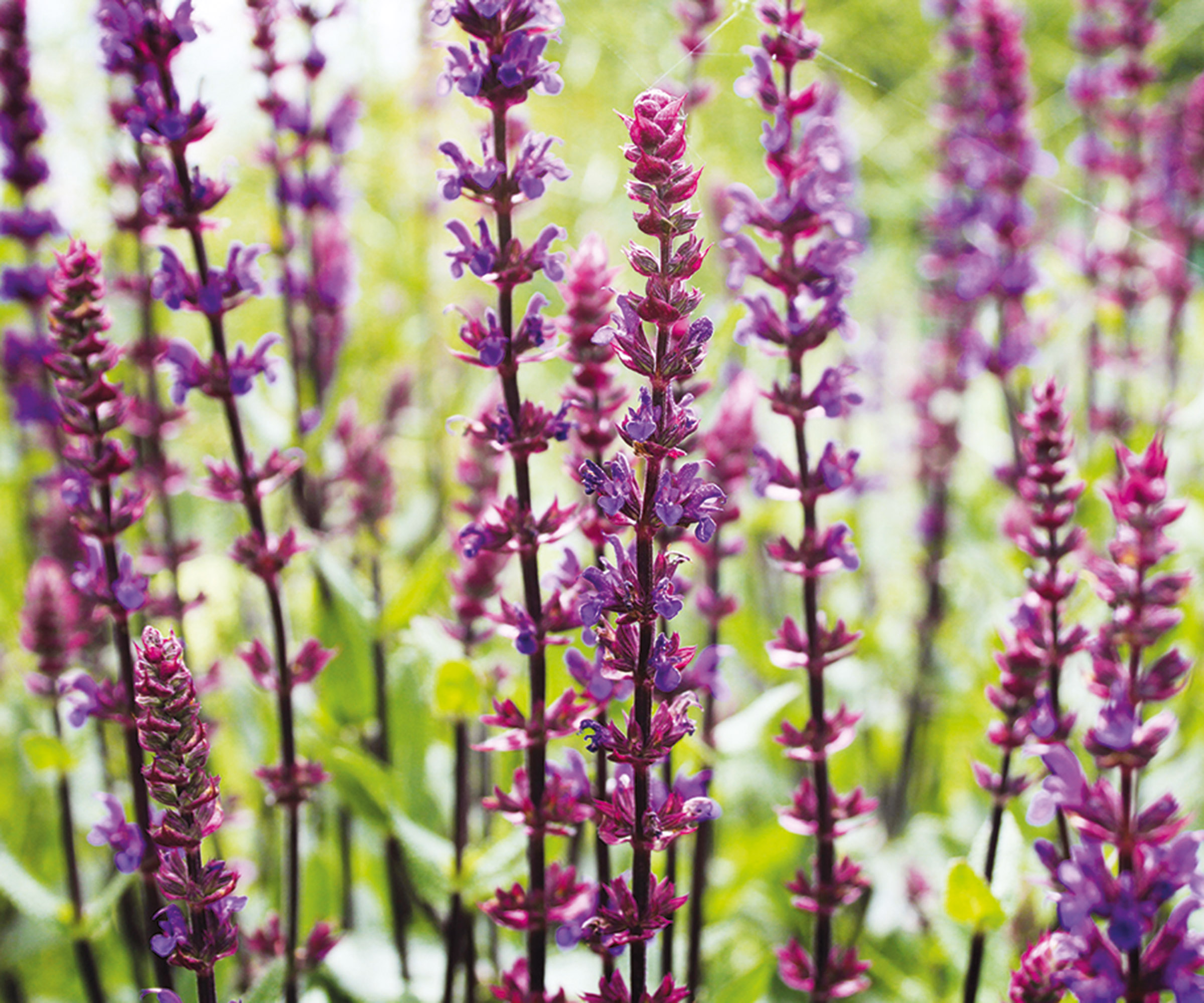
Salvias are one of the most flexible plants you can add to your garden. They come in every colour, from hot pink and cherry red to inky indigo and deep purple, with plenty of pastel shades in between.
“'Salvia x jamensis ‘Belle De Loire’ at Sarah Raven is a stunning plant that produces flowers from late spring all the way through to early autumn, changing colour through the seasons. It’s resistant to dry, poor soils so works well in gravel. Prolong its flowering season by deadheading and avoid positioning it in waterlogged soil during winter," says Sarah Raven.
FAQs
Can you plant directly into gravel?
"Planting directly into gravel can be problematic, as it might be difficult to get the plants established. Generally, gravel drives are not that deep and plants can be planted through the gravel and into the soil beneath," says Nick Hamilton, plant expert at Barnsdale Gardens.
However, some can be planted directly into the gravel, as long as they are watered onto their rootball when they need it, until they get established. There are some plants that will also seed around and these seedlings will happily root into the gravel and grow away.
Carole Crawshaw of Austin Design Works suggests trying self-sowing seeds into gravel; "Mexican Fleabane (Erigeron karvinskianus), Moon Daisy (Leucanthemum vulgare), Fox and cubs (Pilosella aurantica) are perfect for gravel gardens and driveways," says Carole.
What plants grow well in gravel driveways?
There are several plants that are suitable for gravel driveways, Graham Smith MClhort, a gardening expert from LBS Horticulture recommends the below:
"Bugle is an evergreen perennial that produces blue flower spikes that are popular amongst bumblebees. It is good for gravel driveways as it can cope in shady areas, and can survive being occasionally trampled on."
"Purple spoon-leaved stonecrop (sedum spathulifolium ‘Purpureum’) – this is a hardy plant that can survive in less favourable soil conditions, provided that the soil is free draining and it has some sun," says Graham.
What plants are good for gravel gardens?
Carole Crawshaw suggests the below for sunny gravel gardens:
- Rosemary (Salvia rosmarinus)
- Bearded Iris (Iris germanica)
- Yarrow (Achillia)
- Chives (Allium schoenoprasum)
And here are her suggestions for gravel gardens in shade:
- Miscanthus sinensis varieties Red Chief
- Japanese Forest Grass (Hakonechloa macra – all gold)
- Japanese Painted Fern (Athyrium niponicum pictum metallicum)
- Evergreen Fern (Cryptomium fortune)
- Japanese Anemone (Anemone hupehensis)
Despite gravel gardens being largely low-maintenance it's still possible to find weeds popping up from time to time. Have a look at our guide on how to remove weeds from gravel.

Teresa was part of a team that launched Easy Gardens in 2018 and worked as the Editor on this magazine. She has extensive experience writing and editing content on gardens and landscaping on brands such as Homes & Gardens, Country Homes & Interiors and Living Etc magazine. She has developed close working relationships with top landscape architects and leading industry experts, and has been exposed to an array of rich content and expertise.
In 2020 Teresa bought her first home. She and her partner worked alongside architects and builders to transform the downstairs area of her two bedroom Victorian house in north London into a usable space for her family. Along the way she learned the stresses, woes and joys of home renovation, and is now looking to her next project, landscaping the back garden.
